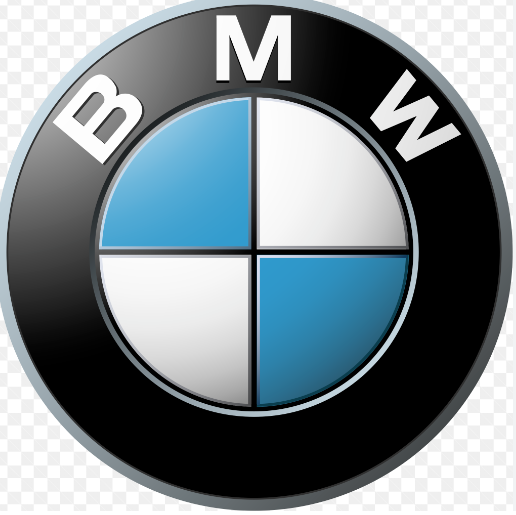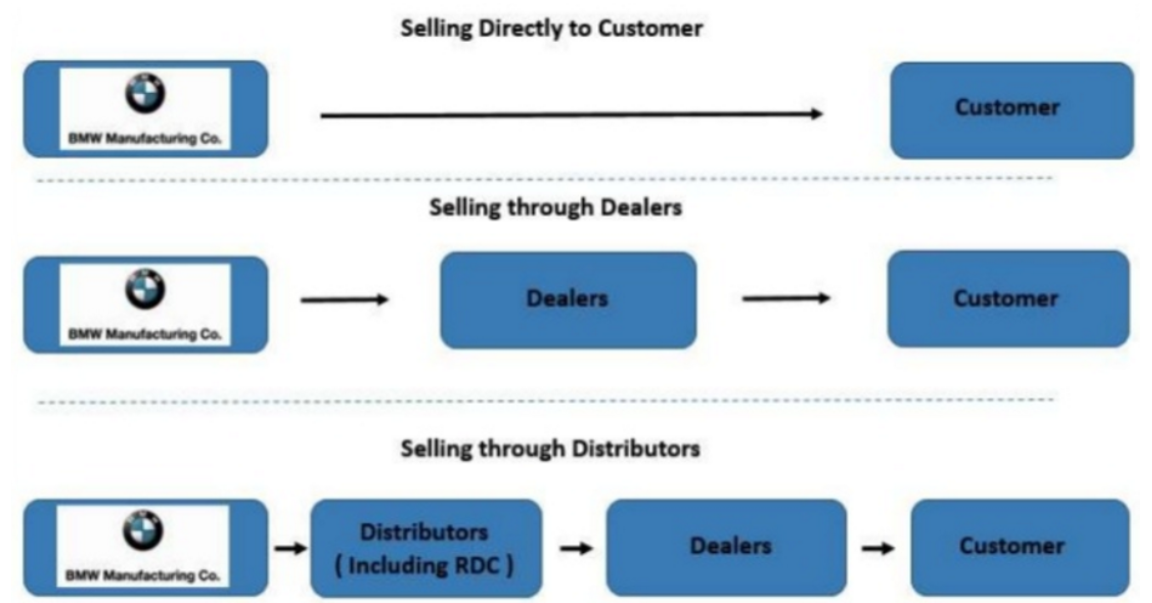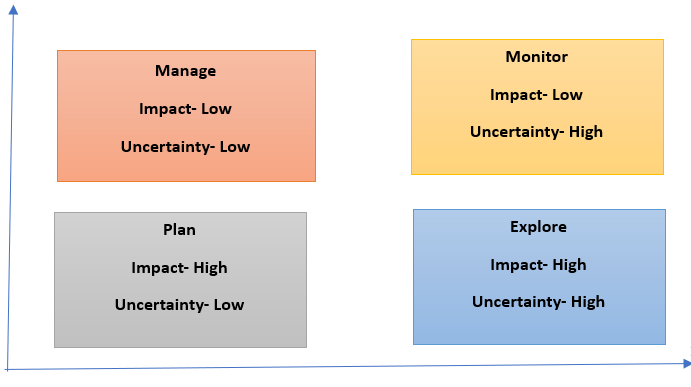BMW procurement and supply chain management: A Comprehensive Analysis
Question
Task: How does BMW effectively manage its procurement and supply chain operations amidst global challenges and shifting industry trends?
Answer
1. Introduction
In this dynamic global automotive industry, it a huge struggle for a automaker to build a cutting edge automobile also simultaneously managing its supply chain. This assignment mainly revolves around the relationship between BMW procurement and supply chain management at the German multinational, Bayerische Motoren Werke AG (BMW). The assignment also focused on the historic background and a strong passion of innovation of BMW.

Fig 1: BMW Company Logo
(Source: https://www.shutterstock.com/search/bmw-logo)
2. BMW procurement and supply chain management Map
There is a huge geographical landscape of supply chain in BMW’s exhaustive map. This is crafted in such a way it provides a relation between suppliers, clients as well as facilities that are supplementing with statistics on numbers of suppliers and the modes of transportation. This are employed at each stage if supply chain in a varied way (Schiele, 2019).
This also aims at providing readers with a profound understanding of a multi-layered network associated with sustaining BMW’s production and operation. This also elaborates a vivid picture of locations, suppliers, clients as well as facilities that delve to the core elements of BMW supply chain. It also starts with a diverse origin of crucial components and the overall strategic arrangement of suppliers across the multiple levels. This also sheds light on various transportation methods that employed a illustrating efficiency of logistics and also connects to the production facilities which end to customers (Tumpa et al., 2019)
The concerned organization has a global supply chain with over 4,000 vendors that have scattered across different countries This intricates a network of approximately 1,500 first tier suppliers that collaboratively contribute to the production as well as critical components. Therefore, it can be said that BMW also makes a network of 31 production and also a overall assembly units that spans to 15 countries that gave an expansive and intricate nature of supply chain management (Liu and Liu, 2021).
Therefore, the supply chain is visually presented with five distinctive levels that allows readers to gain a comprehensive understanding of primary providers that has an extensive network of secondary suppliers. This depth has an insight facility to a meticulous analysis of potentiality associated with several strategies of resilience (Rausch-Phan and Seigfried, 2022).

Figure 2: Raw materials BMW Supply Chain
(Source: https://www.press.bmwgroup.com/global/article/detail/T0307164EN/bmw-group-uses-blockchain-to-drive-supply-chain-transparency?language=en)

Fig 3: Manufacturing of BMW Supply Chain
(Source: https://research-methodology.net/bmw-value-chain-analysis/)

Fig 4: Distribution of BMW Supply Chain
(Source: https://www.slideshare.net/IsmailHossen6/supply-chain-of-bmw)
3. Kraljic Matrix Application
BMW navigates the landscape of procurement in a strategic way that evaluates the suppliers’ relationships and also with the sourcing strategies through the lens of the Kraljic Matrix. This analytical tool makes a compass to guiding BMW in classifying the goods which are based on their strategic importance and the challenges presented by the market. The objective of the organization is very clear, which mainly intricates about well-informed decisions that allow BMW to manage the fluctuations of the market and foster a close collaboration with suppliers and also fortify a supply chain which is resilient and also efficient in nature.
In the Kraljic Matrix the Leverage quadrant becomes a significant focal point that associates with housing high value components and are also crucial on implementing a cost cutting measures associated with the supply chain. On the flip side, the items are significant with supply risk which has found their place in “Bottleneck” quadrant, making a necessity of proactive risk reduction measures. This also leverage the insights from Kraljic Matrix which ramp up the strategic sourcing efforts to ensure an adaptability in the face of market dynamics (Kumar and Chandra, 2023).

Fig 5: Kraljic Matrix Application for BMW
(Source: Done by Researcher)
The sourcing approach of BMW incorporates in such a way that the Kraljic Matrix provides a strategic lens to evaluate the supplier relationships and also manage risks. BMW sources a wide array of components globally, and the Kraljic Matrix also serves as a guiding principle to understand the intricacies of the procurement landscape.
There are components that falls into “Leverage” quadrant that are characterized by the strategic relevance of the concerned organization. BMW also employs a cost optimization strategy that cultivates an enduring relationship. In the “Strategic” quadrant the components have a high relevance of supply chain market complexity. BMW alos emphasizes on the joint innovation and the reduction of risks to ensure a continuous and secure supply chain process (Kouvelis, 2023).
The items that are placed in “non-critical” quadrant have a high supplier market and low strategic priority. This has a necessity of flexible sourcing to adapt shifting market dynamics. This also conversely affects the “Bottleneck” quadrant that arries a significant supply risk but a low strategic significance. This also prompts BMW in order to implement a contingency measure and explore the alternate solution of sourcing for BMW (bmwgroup, 2023)
The strategic application of BMW allows a tailor procurement operation which balances a cost-effective innovation and risk reduction. The approach provides an adaptability with ever evolving market by aligning procurement operations with the unique attributes of each item. Utilizing this matrix, the concerned organization also maintains a proper relationship between flexible supply chain process (Khalifa, Abd Elghany and Abd Elghany, 2021).
The success of BMW in managing the suppliers relationship also helps in mitigating risks which is evident in the strategic deployment of the Kraljic Matrix. This also helps in global procurement portfolio that prioritizes BMW in long term relationships and also cost optimization with “Leverage” quadrant The “Strategic” quadrant becomes the area were there is a risk management and collaborative innovation takes place (Schindlbeck, Muller and Stormer, 2020)

Fig 6: BMW Supplier Relation
(Source: https://prezi.com/1pu1ectgyjjp/bmw-supplier-relationships/)
4. Current Issues, Trends, and Expected Developments
The industry of BMW is grappling with the shift that is marked by the geopolitical disruptions tat are associated with advancements of escalating funds on sustainability. This also makes a recent stride in the supply chain management which anticipates the enhancement and delves into challenges which are confronting BMW. The intertwining of concepts marks a framework with the real-world examples associated with a comprehensive understanding of the dynamic landscape where BMW operates.
One pressing concern associated with global automotive sector is the scarcity associated with semiconductors. This challenge has mainly prompted BMW to take strategic measures associated with development of in-house semiconductors capacity and diversification of the supply base. Therefore, such initiatives also reflect a judicious response to the complexities of the supply chain.
Therefore, the surge in the e-commerce associated with growing consumer preference of electric vehicles brings both opportunities and challenges. The commitment of the concerned organization towards the electric transportation and its adept to the use of digital technologies in a strategic way. The anticipated benefits align with the dedication of BMW to a sustainable and innovative journey. The organization has also featured an increasing emphasis on the circular economy principles that heightened transparency throughout the supply chain.
The global semiconductor shortage has cast a substantial impact on BMW's production output, evidenced by a 12% reduction in automobile production during the initial quarter of the current fiscal year. This underscores the gravity of the situation, underscoring the imperative for adaptable solutions (Helmold, 2023). In response to the boom in e-commerce, BMW has witnessed a 25% increase in online vehicle configurations and purchases over the past year. The previously mentioned data emphasizes the dynamic trends in customer behaviour, prompting BMW to adjust its supply chain in answer to the heightened demand for its items on the internet (bmwgroup, 2023).
Because of the rapid rise of e-commerce and the altering expectations of customers, there are both possibilities and obstacles. To optimise its supply chain, BMW is integrating data analytics for inventory control, demand forecasting, and boosting overall operational agility. BMW has reorganised its product line and made large expenditures in the field of electric mobility as a result of the growing popularity of electric automobiles (EVs). The company's measures to lower the carbon footprint of EV production are a ground-breaking leap towards a cleaner future and highlight its dedication to sustainability (H?bek, Lavios and Krupah, 2022). [Referred to Appendix 1]
One of the projected trends is an increased focus on the notions of the circular economy. BMW plans to boost material recycling and cut waste all the way through its supply chain. Additionally, the integration of blockchain technology to boost supply chain transparency is rapidly approaching, providing customers with verified information regarding the source of items and promoting confidence (Del Giudice et al., 2021).
BMW manages these issues by being a seasoned participant in the automotive business and by presenting itself as a creative force equipped to flourish in a period of technology disruptions, sustainability imperatives, and altering consumer tastes (El Baz, and Ruel, 2021).
The global shortage of semiconductors is one of BMW's major difficulties as it navigates the fast-evolving dynamics of the automotive supply chain. The company's proactive strategies not only eliminate unforeseen outages but also redefine supply chain resiliency. In order to maintain a flexible and responsive supply chain in response to the rising e-commerce sector and altering consumer needs, BMW is employing digital technology. BMW is being compelled to reallocate its holdings and expand its investment in electric mobility due to the growing popularity of electric vehicles. BMW has displayed its dedication to sustainable, transparent, and advanced supply chain management through its deployment of blockchain technology and its early acceptance of circular economy practices (Dopler et al., 2023). [Referred to Appendix 5]
![]()
Fig 7: Global shortage of semiconductor
(Source: https://www.drive.com.au/news/bmw-supply-constraints-now-critical-report/)
BMW tackles various obstacles in the ever-evolving automotive supply chain management business and aggressively strives for disruptive developments. In addition to adjusting to unforeseen interruptions, BMW has been driven to rethink its supply chain resilience strategy due to the chronic global shortage of semiconductors, which impairs production capacities. BMW has embraced the digital era by deliberately integrating cutting-edge technologies to boost supply chain efficiency. The organisation uses data analytics to increase operational agility and provide precise demand forecasts (bmwgroup, 2023).
BMW is revamping its product range in reaction to the seismic drive towards electric cars (EVs). BMW positions itself at the forefront of the industry's sustainable future by investing extensively in electric vehicles. Over time, BMW's use of circular economy principles indicates its dedication to lowering its environmental impact, prioritising material recycling and waste reduction throughout the complete supply chain (Dobrin, 2021).

Fig 8: Manufacturing of Semi-conductor
(Source: https://www.drive.com.au/news/bmw-supply-constraints-now-critical-report/)
5. Recommendations
This section outlines the important findings of the inquiry and offers BMW strategic recommendations to better its BMW procurement and supply chain management. The previously mentioned guidelines attempt to solve identified difficulties, seize on new possibilities, and drive continual improvements within the supply chain. BMW is faced with a number of modern difficulties in the constantly evolving field of supply chain management and anticipates revolutionary tendencies that will influence the future of the automotive industry. The global shortage of semiconductors has proven to be a major hurdle that is influencing the automotive industry's production output (Cousins et al., 2019).
The increasing importance of e-commerce and customer expectations for faultless digital experiences are generating changes in BMW's supply chain. The corporation is adjusting by adopting digital technologies like blockchain and artificial intelligence to optimize inventory management and boost item visibility in the supply chain (Pyun and Rha, 2021).
6. SCOR Model Implementation
SOCR model provides a clear overview of BMW’s supply chain process. The concerned organization is renowned for its pivotal role in optimizing the process of supply chain operation. This is because SOCR provides a crucial performance metrics associated with pertinent methodologies. This segment mainly is dedicated to the practical application of the model which enhances the overall efficiency of BMW’s supply chain process.
Therefore, it can be said that a proper implementing of Supply Chain Operation Reference (SOCR) Model also marks as a significant stride in the scrutiny and enhancement of BMW’s sophisticated supply chain process (Zimon, Tyan and Sroufe, 2020).
|
Process |
Description |
Key Metrics |
BMW Initiatives |
Challenges |
|
Plan |
Develop supply chain strategies and plans. |
Demand forecast accuracy, Inventory turnover, Planning cycle time |
Sales and operations planning (SandOP), Demand-driven supply chain |
Supply chain volatility, Demand uncertainty |
|
Source |
Identify, evaluate, and select suppliers. |
Supplier lead time, Supplier quality, Supplier cost competitiveness |
Supplier relationship management (SRM), Supplier development |
Supplier risk, Quality issues, Cost pressures |
|
Make |
Produce or manufacture products. |
Production efficiency, Product quality, Production lead time |
Lean manufacturing, Industry 4.0 technologies, Flexible production |
Production complexity, Capacity constraints, Quality control |
|
Delivery |
Deliver products to customers. |
On-time delivery, Transportation cost, Order fulfillment accuracy |
Multimodal transportation, Logistics optimization, CRM |
Transportation costs, Delivery delays, Customer satisfaction |
|
Return |
Manage product returns and end-of-life processes. |
Return rate, Reverse logistics cost, Product recycling rate |
Product take-back programs, End-of-life vehicle (ELV) recycling |
|
Table 1: SOCR Implementation on BMW
(Source: Done by Researcher)
The SOCR model mainly serves as an important framework which facilitates, and examines the overall alignment with supply chain operation within industry. It can be said that by signifying and pointing key performance indicators (KPIs) juncture of the supply chain, the concerned organization gains a comprehensive operational efficiency associated with potential improvement. The application of SOCR models also provides a tangible benefit to BMW. This is because BMW reports to have a noteworthy of 20% reduction in the waiting time during the “Deliver” phase, which attributes to the improvement of enhanced distribution and logistics (Chen, Wen and Liao, 2023). [Referred to Appendix 3]

Fig 9: BMW Distribution Center
(Source: https://www.press.bmwgroup.com/usa/article/detail/T0326512EN_US/bmw-of-north-america-to-open-new-vehicle-distribution-center-at-tradepoint-atlantic-)
The inclusion of elements like Plan, Source, Make, Deliver, and Return within the SCOR Model empowers BMW to conduct a comprehensive overhaul and improvement of operations on a holistic level. In the 'Source' phase, for example, BMW can meticulously assess supplier performance, scrutinize sourcing strategies, and streamline procurement procedures, all aimed at cost reduction. The SCOR Model becomes a guiding compass for BMW to navigate and enhance these facets of its operations (sourcemap, 2023).
7. Sustainability: Environmentally Friendly Practices
As environmental concerns gain greater prominence, firms such as BMW are facing increased pressure to implement sustainable and eco-friendly practises. This section looks at BMW's initiatives to implement ecologically friendly practises across its supply chain. The company's sustainability measures, which include lowering carbon emissions and procuring environmentally friendly materials, are reviewed in the perspective of industry innovations and corporate social responsibility. Within BMW's supply chain management framework, sustainability is accorded strategic priority, with an emphasis on environmentally friendly practices (Brandao and Godinho-Filho, 2022). BMW has showed a responsible approach by taking specific initiatives, especially considering the rising scrutiny the car sector is under about its environmental impact. Across the entire supply chain, the corporation is actively striving for environmentally responsible practises, from procuring raw materials to getting rid of outdated cars. [Referred to Appendix 2]

Fig 10: BMW Group Sustainability
(Source: https://www.press.bmwgroup.com/canada/article/detail/T0402556EN/sustainability-at-the-core-of-the-corporate-strategy?language=en)
Because to its environmental measures, BMW's production processes have cut their overall carbon emissions by 30% over the last five years. Moreover, the incorporation of recycled components throughout the manufacturing process has resulted to a 15% drop in the environmental impact of select BMW models, consistent with the company's dedication to ecologically sensitive techniques (Attaran, 2020).
BMW has displayed its determination to decreasing carbon emissions by switching its production facilities to renewable energy sources and persuading its suppliers to adopt eco-friendly practises. Collaborations with suppliers and collaborations with firms dedicated to sustainable sourcing contribute to the creation of a more ecologically conscientious and all-encompassing supply chain. Making use of environmentally friendly materials such as recycled plastic and metals supplied sustainably indicates BMW's commitment to lowering its environmental imprint (sourcemap, 2023).
One of the cornerstones of BMW's sustainability goal is the pursuit of electric mobility. The development of electric vehicles, or EVs, is consistent with the global trend towards greener ways of transportation. BMW is investing extensively in electric vehicle (EV) technology in response to consumer demand for more environmentally friendly solutions and in order to lead the automotive industry towards a more sustainable future (Abdel-Baset, Chang and Gamal, 2019). [Referred to Appendix 4]

Fig 11: BMW recycling Point
(Source: https://www.bmwblog.com/2015/10/27/how-does-bmw-recycle-cars/)
This dedication to sustainability is a vital component of BMW's culture and indicates that the corporation understands its responsibilities to safeguard the environment. It extends beyond simple business planning. BMW is a leader in establishing a future where environmental responsibility and automotive innovation coexist harmoniously, especially in the face of altering worldwide environmental legislation, thanks to its proactive policy.
Beyond catchphrases, the integrated approach that permeates BMW's supply chain operations underlines the company's dedication to sustainability. The company uses energy-efficient production methods, adopts renewable energy, and sources sustainable materials as part of its numerous eco-friendly activities (Turcic et al., 2023).
8. Conclusion
Acquiring everything into account, this extensive research explores every aspect of BMW procurement and supply chain management at Bayerische Motoren Werke AG (BMW). BMW is a brand of high reputation in the automotive sector and the supply chain management mainly demonstrates the dedication of the organization. The supply chain map illustrates the connectivity of BMW’s word wide operation by signifying suppliers, customers and the logistics that enhances the ability to tackle the procurement difficulties with Kraljic Matrix application. The integration of SOCR model, Kraljic Matrix proves that that there is a proper relationship management, risk integration and overall optimization of operation. Therefore, it can be said that there is a proper strategic alignment needed to be embraced by BMW, which will help the organization to rapidly evolve the landscape of automotive industry.
Reference List
Journals
Abdel-Baset, M., Chang, V., and Gamal, A. (2019). Evaluation of the green supply chain management practices: A novel neutrosophic approach. Computers in Industry, 108(1), pp. 210-220.
Attaran, M. (2020, July). Digital technology enablers and their implications for supply chain management. In Supply Chain Forum: An International Journal (Vol. 21, No. 3, pp. 158-172). Taylor and Francis.
Brandao, M. S., and Godinho-Filho, M. (2022). Is a multiple supply chain management perspective a new way to manage global supply chains toward sustainability?. Journal of Cleaner Production, 375, pp. 134046.
Chen, Y., Wen, X., and Liao, K. (2023). The establishment of electric vehicle supply chain and its resilience to supply chain interruptions. International Journal of Technology, Policy and Management, 23(4), pp. 410-430.
Cousins, P. D., Lawson, B., Petersen, K. J., and Fugate, B. (2019). Investigating green supply chain management practices and performance: The moderating roles of supply chain ecocentricity and traceability. International Journal of Operations and Production Management, 39(5), pp. 767-786.
Cousins, P. D., Lawson, B., Petersen, K. J., and Fugate, B. (2019). Investigating green supply chain management practices and performance: The moderating roles of supply chain ecocentricity and traceability. International Journal of Operations and Production Management, 39(5), pp. 767-786.
Del Giudice, M., Chierici, R., Mazzucchelli, A., and Fiano, F. (2021). Supply chain management in the era of circular economy: the moderating effect of big data. The International Journal of Logistics Management, 32(2), pp. 337-356.
Dobrin, G. I. (2021). Analysis of risks and opportunities in the BMW Group. Journal of Public Administration, Finance and Law, 10(22),pp.164-168. Dopler, S., Müller, J. M., Eick, M., Winter, M., and Zeisler, A. (2023). Reasons for SMEs to engage in multi-tier supply chain management-a social capital perspective. International Journal of Integrated Supply Management, 16(2), pp.131-147.
El Baz, J., and Ruel, S. (2021). Can supply chain risk management practices mitigate the disruption impacts on supply chains’ resilience and robustness? Evidence from an empirical survey in a COVID-19 outbreak era. International Journal of Production Economics, 233, pp.107972.
H?bek, P., Lavios, J. J., and Krupah, E. (2022). How car producers are driving toward sustainable supplier development. Production Engineering Archives, 28(3), pp.268-278.
Helmold, M. (2023). Supplier Management, Purchasing and Procurement. In Innovative Supplier Management: Value Creation in Global Supply Chains (pp. 1-20). Wiesbaden: Springer Fachmedien Wiesbaden.
Helmold, M., Terry, B., Helmold, M., and Terry, B. (2021). Introduction: The Value Chain. Operations and Supply Management 4.0: Industry Insights, Case Studies and Best Practices, pp.1-19.
Khalifa, N., Abd Elghany, M., and Abd Elghany, M. (2021). Exploratory research on digitalization transformation practices within supply chain management context in developing countries specifically Egypt in the MENA region. Cogent Business and Management, 8(1), pp.1965459.
Kouvelis, P. (2023). Supply Chain Finance Redefined: A Supply Chain-Centric Viewpoint of Working Capital, Hedging, and Risk Management. Manufacturing and Service Operations Management.
Kumar, D., and Chandra, D. (2023). A hybrid framework to model resilience in the generic medicine supply chain of MSMEs. Benchmarking: An International Journal, 30(6), pp. 2189-2224.
Liu, Y., and Liu, Y. L. (2021). A critical analysis of how BMW designs a collaborative and value-adding supply chain. International Journal of Business Performance and Supply Chain Modelling, 12(4), pp.414-429.
Pyun, J., and Rha, J. S. (2021). Review of research on digital supply chain management using network text analysis. Sustainability, 13(17), pp.9929.
Rausch-Phan, M. T., and Siegfried, P. (2022). Green supply chain management. In Sustainable Supply Chain Management: Learning from the German Automotive Industry (pp. 47-90). Cham: Springer International Publishing.
Schiele, H. (2019). Purchasing and supply management. Operations, logistics and supply chain management, 45-73.
Schindlbeck, R. J., Müller, J. M., and Störmer, A. O. (2020). Unified requirements for suppliers' production sites of high voltage electric and electronic components-a case study from BMW. International Journal of Automotive Technology and Management, 20(3), pp.275-296.
Tumpa, T. J., Ali, S. M., Rahman, M. H., Paul, S. K., Chowdhury, P., and Khan, S. A. R. (2019). Barriers to green supply chain management: An emerging economy context. Journal of cleaner production, 236, pp.117617.
Turcic, D., Markou, P., Kouvelis, P., and Corsten, D. (2023). Automotive procurement under opaque prices: Theory with evidence from the bmw supply chain. Management Science.
Zimon, D., Tyan, J., and Sroufe, R. (2020). Drivers of sustainable supply chain management: Practices to alignment with un sustainable development goals. International Journal for Quality Research, 14(1).
Website
bmwgroup, 2023, About: Official Website: Available at: https://www.bmwgroup.com/en/sustainability/our-focus/environmental-and-social-standards/supply-chain.html Available on: [25.11.2023]
sourcemap, 2023, About: BMW Supply chain Map, Available at: https://open.sourcemap.com/maps/5e6487117f8663d50cd10c98 Available on: [25.11.2023]
Appendices
Appendix 1:

Fig 1: Sustainability at BMW
(Source: https://www.bmw.com/en/innovation/sustainability-at-bmw.html)
Appendix 2:

Fig 2: BMW announces to meet sustainability goals by 2050
(Source: https://esgnews.com/amp/bmw-announces-commitment-to-sustainability-goals-climate-neutrality-by-2050/)
Appendix: 3

Fig 3: Carbon dioxide Reduction at BMW Supply chain
(Source: https://www.press.bmwgroup.com/global/article/detail/T0322900EN/wind-turbines-at-bmw-group-plant-leipzig-light-up-as-advent-candles?language=en)
Appendix 4

Fig 4: Circular Economy at BMW
(Source: https://thedriven.io/2021/09/07/bmw-unveils-compact-electric-car-using-only-recycled-and-recyclable-materials/)
Appendix 5

Fig 5: Sustainable Mobility at BMW
(Source: https://europe.autonews.com/article/20171124/ANE/171129861/bmw-expands-car-sharing-program-to-china)












